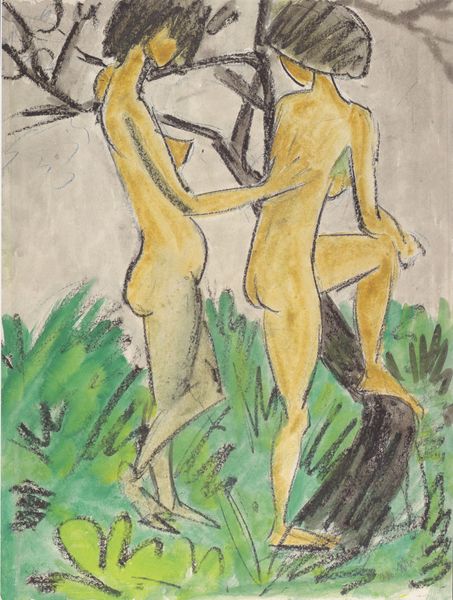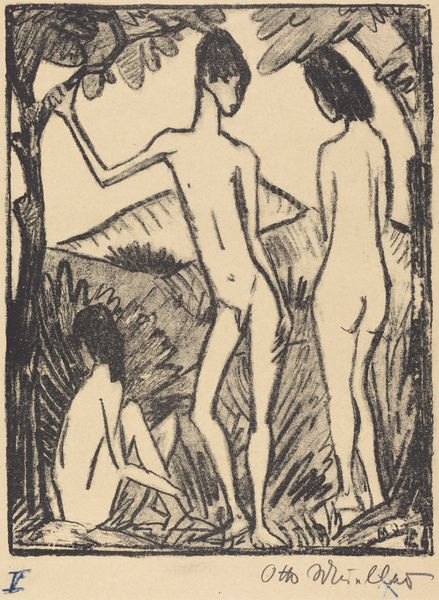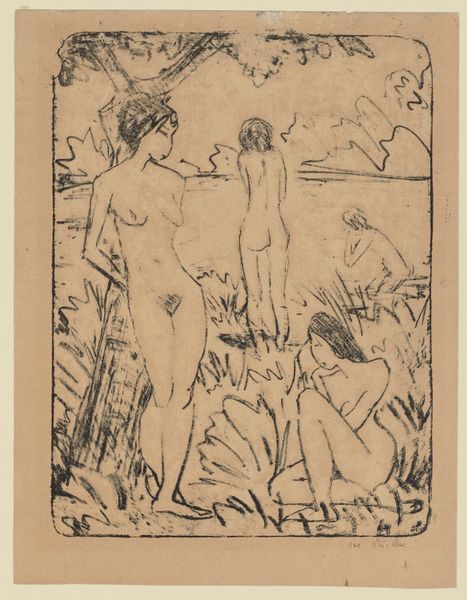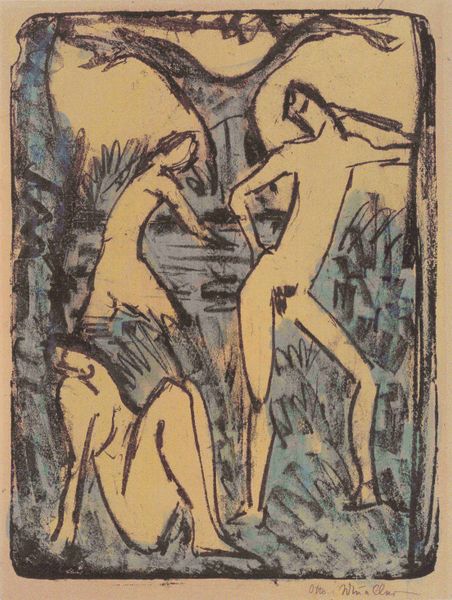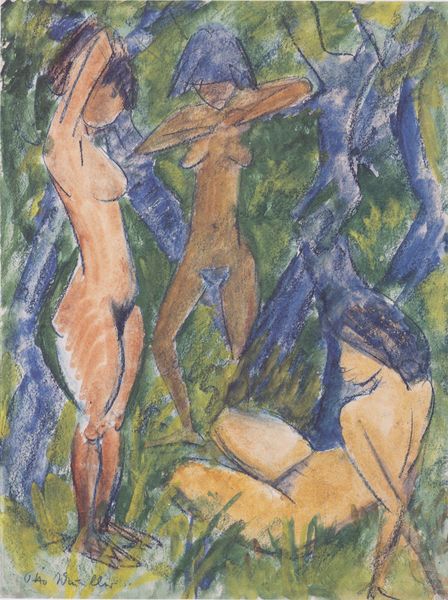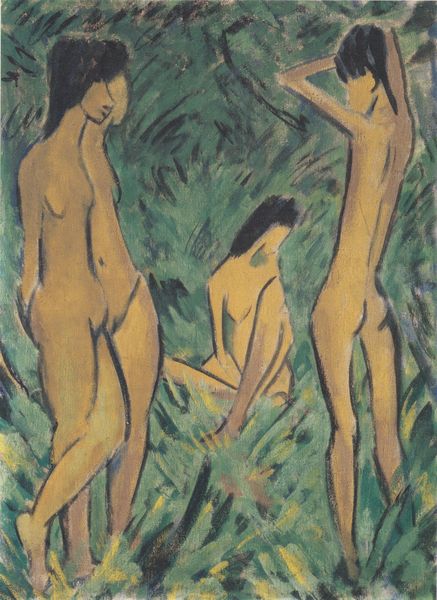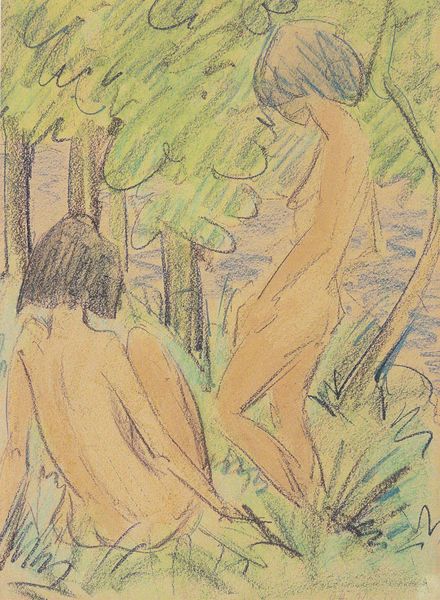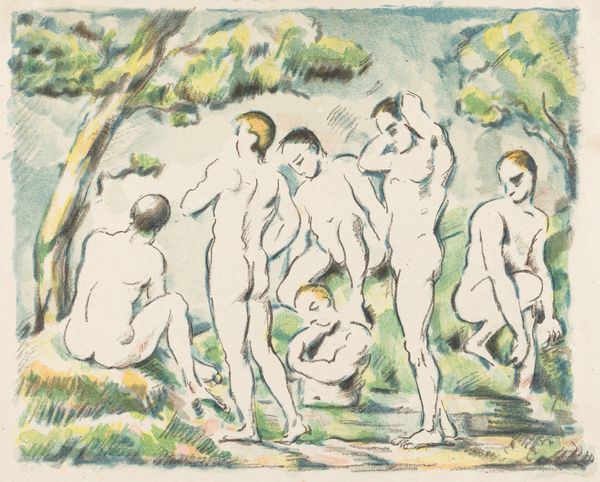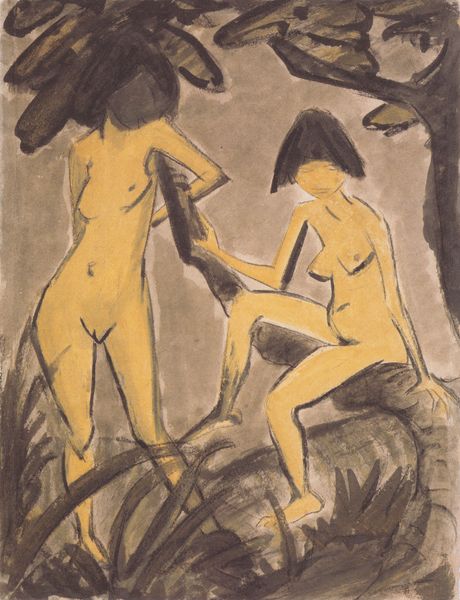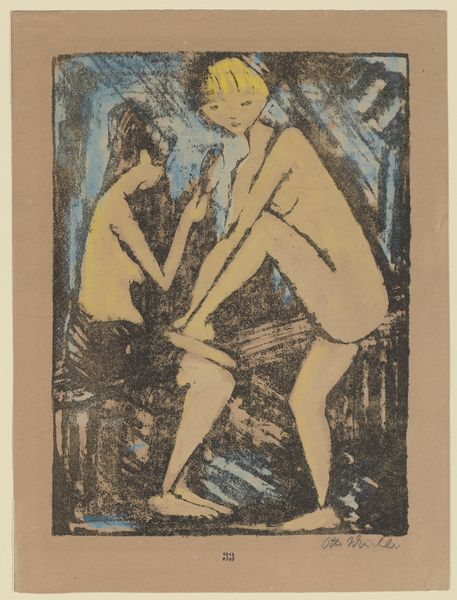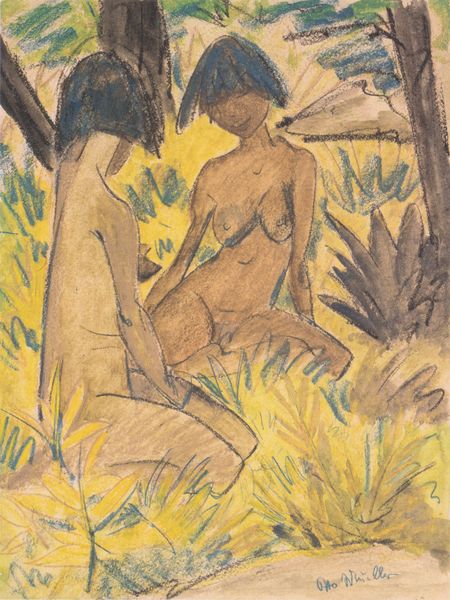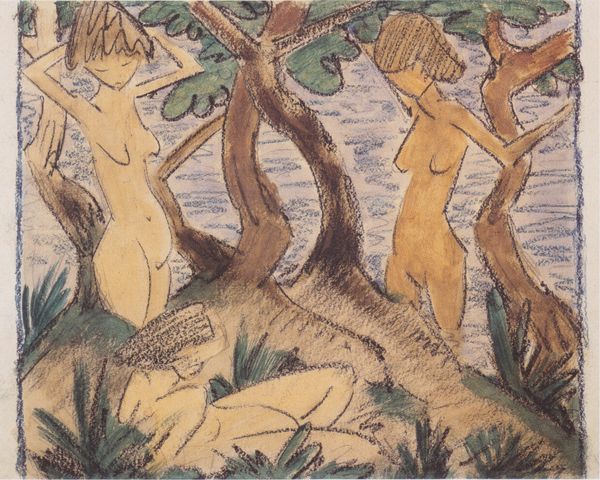
drawing
#
drawing
#
ink drawing
#
figuration
#
expressionism
#
nude
Dimensions: 30 x 40 cm
Copyright: Public domain
Editor: We’re looking at *Drei Stehende Mädchen* by Otto Mueller, created in 1926. It appears to be an ink drawing, and what strikes me most is the starkness of the figures against this roughly rendered background. What can you tell me about the piece? Curator: From a materialist perspective, I'm interested in the “how” and “why” of this ink drawing. Ink as a medium is readily accessible; Mueller’s choice might reflect the economic realities of post-war Germany. Expressionism valued subjective experience, and the inexpensive nature of ink made it practical for rapidly expressing his artistic vision in unstable socio-political times. Look at the roughness; the visible labor. How does that raw execution influence your interpretation? Editor: That’s a great point; the lack of refinement definitely adds to the emotional impact. Did Expressionist artists often favor readily available or more ‘rough and ready’ materials? Curator: Absolutely. Expressionism rebelled against academic traditions that emphasized polish and idealized representation. Artists focused on conveying intense emotions through readily available materials. For instance, woodcuts experienced a revival; the act of carving directly into the wood with simple tools was very expressive and highlighted the artist's process and engagement with the materiality. We see that here with the raw application of ink, not obscured by layers of refinement. Editor: I hadn’t thought about the conscious rejection of "polish" in favor of emotional honesty, that really helps frame the context here. Curator: Exactly. It prompts us to reconsider art's value not just in aesthetic perfection, but also the intention, materials, and labor invested within a particular historical and social moment. Editor: Thinking about the materials and their context, opens up a whole new avenue of interpreting art. Thanks!
Comments
No comments
Be the first to comment and join the conversation on the ultimate creative platform.
